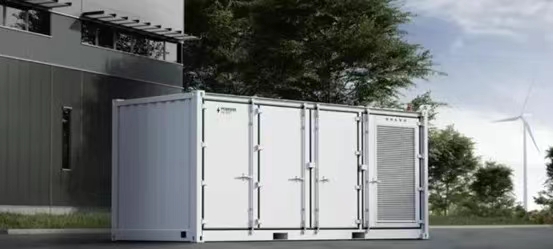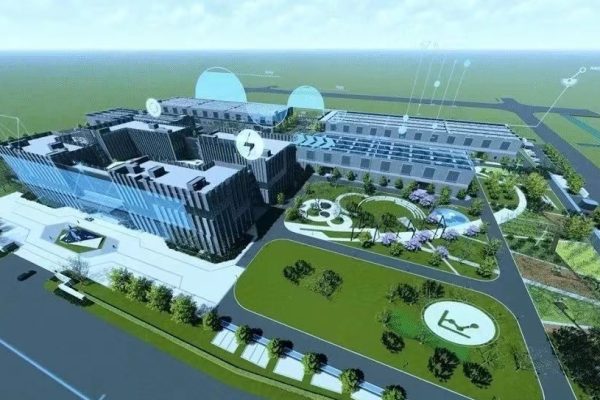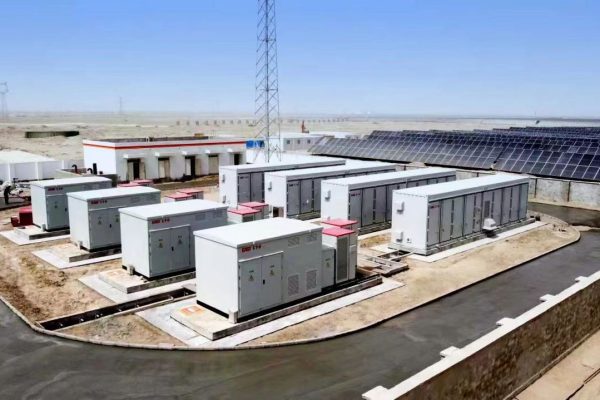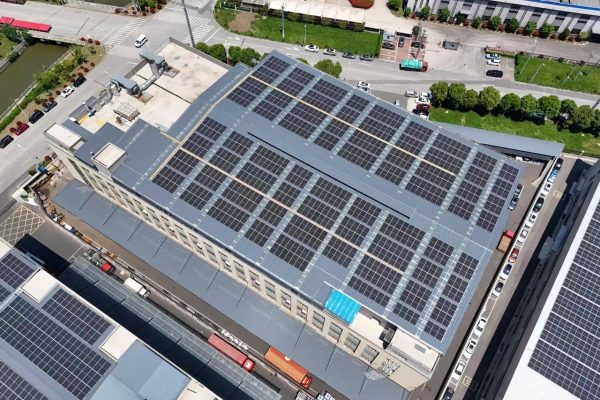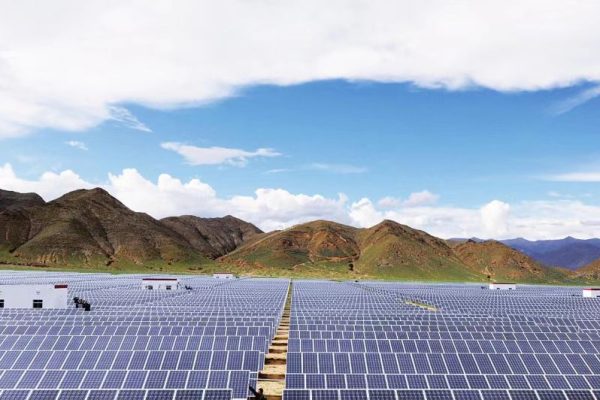In modern communication networks, communication towers serve as the backbone of cellular and data networks, ensuring seamless connectivity for businesses, governments, and individuals. These towers house vital communication equipment that must remain operational 24/7 to maintain service reliability. However, communication towers are often located in remote areas with limited access to reliable power grids, making them highly susceptible to power interruptions.
To address this challenge, energy storage systems (ESS) are being integrated into communication towers to provide backup power, ensuring redundancy, safety, and uninterrupted service during power outages or grid failures. This article explores the importance of energy storage in communication towers, the key technologies involved, and how ESS solutions enhance tower operations by improving reliability, redundancy, and safety.
1. Importance of Energy Storage in Communication Towers
Communication towers are critical infrastructures that provide essential services such as cellular connectivity, internet access, and radio communication. These towers support various types of telecommunication equipment, including transmitters, receivers, and base stations. The need for consistent, uninterrupted power to operate this equipment is crucial to avoid service disruptions.
In many regions, particularly in remote or rural locations, communication towers are not connected to the grid or face frequent power outages due to severe weather, natural disasters, or maintenance issues. As a result, communication tower operators must rely on backup power systems to maintain service reliability.
Key reasons for integrating energy storage in communication towers:
- Grid reliability issues: Power interruptions due to unstable grid connections or natural disasters.
- Remote locations: Towers in off-grid or rural areas where grid infrastructure is unavailable.
- Operational redundancy: To ensure critical communication services are uninterrupted even during power failures.
- Cost efficiency: Reduced reliance on expensive and environmentally harmful diesel generators.
Energy storage plays a pivotal role in addressing these challenges by providing backup power and enabling towers to continue operations when there is no external power supply.
2. Redundancy and Reliability in Communication Towers
One of the main challenges for communication towers is ensuring redundancy. Redundancy in communication towers refers to the ability of the system to remain operational even when certain components fail. This is essential for maintaining network availability, especially in mission-critical applications where downtime can have significant consequences.
a) Battery Backup for Continuous Power Supply
Energy storage systems in communication towers typically consist of batteries that provide backup power during grid failures. These batteries can be configured to automatically kick in when there is a loss of grid power, allowing the tower to continue operating without interruption.
- Lithium-ion batteries are a popular choice due to their high energy density, long cycle life, and efficiency.
- Lead-acid batteries are still in use for some older systems but have lower efficiency and shorter lifespans compared to modern lithium-based options.
To ensure redundancy, multiple batteries can be installed to create a fail-safe system. This means that if one battery fails or its charge drops below a certain threshold, the other batteries can pick up the load, ensuring uninterrupted service.
b) Automated Power Switching and Control Systems
Integrating automated switching mechanisms and energy management systems (EMS) into the energy storage system ensures smooth transitions between different power sources (such as the grid, diesel generators, or batteries).
- When power is lost from the grid, the EMS will automatically switch the tower’s equipment to battery power.
- The EMS also monitors battery health and charge levels to ensure that there is always enough energy for essential functions.
This level of automation minimizes the need for human intervention and ensures that the tower remains operational even during unforeseen power outages.
3. Safety Considerations in Energy Storage for Communication Towers
Safety is a paramount concern when integrating energy storage systems into communication towers. Given that communication towers are often located in isolated or difficult-to-reach areas, ensuring the safety and reliability of the energy storage systems is critical to avoiding risks such as fires, explosions, and system failures.
a) Battery Safety Systems
Modern energy storage solutions, particularly lithium-ion batteries, have built-in safety features to protect against potential hazards such as overcharging, overheating, or short circuits.
- Battery Management Systems (BMS): A BMS continuously monitors the voltage, temperature, and current of each battery cell to ensure safe operation. If any irregularities are detected, the system will shut down or re-route the power to prevent potential hazards.
- Fire and explosion prevention: Lithium-ion batteries are equipped with thermal management systems that prevent overheating, which is a common cause of fires in poorly managed battery systems. Additionally, venting mechanisms ensure that any gas buildup from battery cells is safely expelled.
For towers with large energy storage installations, fire suppression systems may also be implemented to prevent the spread of fires should they occur.
b) Environmental Protection
Communication towers are exposed to various environmental hazards, such as extreme weather conditions, high humidity, dust, and temperature fluctuations. These factors can degrade the performance of energy storage systems and potentially cause safety issues.
To address these concerns, energy storage systems in communication towers are typically housed in protective enclosures or weatherproof containers that shield the batteries and other components from environmental damage.
Additionally, temperature control systems may be incorporated to prevent overheating or freezing of battery cells, ensuring that the system operates optimally under various environmental conditions.
4. Optimizing Energy Storage for Communication Tower Operations
Energy storage systems need to be optimized not only for reliability but also for cost efficiency and performance. Several strategies can help improve the efficiency of energy storage systems in communication towers:
a) Hybrid Systems for Cost-Effectiveness
While batteries are essential for providing backup power, relying solely on batteries for continuous power can be expensive. To improve cost efficiency, many communication towers use hybrid systems that combine energy storage with diesel generators or solar panels.
- Solar PV panels can be installed on-site to harness renewable energy during the day, reducing reliance on grid power or diesel generators.
- Diesel generators can serve as a secondary backup in cases where solar energy is insufficient or when battery power needs to be replenished.
By using solar panels in combination with batteries, tower operators can reduce fuel consumption, lower operational costs, and reduce the environmental impact of their operations.
b) Energy Storage Sizing and Forecasting
Properly sizing the energy storage system is essential to ensure it meets the specific needs of the communication tower. Over-sizing can lead to unnecessary costs, while under-sizing may result in power shortages during extended outages.
- Energy demand forecasting can help operators better estimate the amount of energy storage needed based on factors such as tower location, typical weather patterns, and expected power usage.
- Advanced predictive algorithms can be integrated into the energy management system to forecast energy demand and generation patterns, optimizing the use of both battery storage and other power sources.
5. Case Study: Energy Storage Integration in a Remote Communication Tower
Background
A communication tower in a remote region of the Middle East experienced frequent power interruptions due to unreliable grid connections and extreme weather conditions. The tower provided critical services for mobile communications and internet connectivity to a large area, and any power outage could result in significant service disruption.
Solution
To address these challenges, the tower was equipped with a hybrid energy storage system:
- A 200 kW solar PV system was installed to provide renewable energy during daylight hours.
- 120 kWh of lithium-ion battery storage was integrated to store excess solar energy and provide backup power during grid failures.
- The system was also paired with a diesel generator for emergency use.
Results
- The solar PV system provided approximately 40% of the tower’s daily energy needs, significantly reducing reliance on grid power.
- The lithium-ion battery storage ensured that the tower remained operational for up to 72 hours during power outages, enhancing service reliability.
- The overall system reduced fuel consumption by 30%, lowering operational costs and improving environmental sustainability.
Integrating energy storage systems into communication towers is essential for ensuring redundancy, reliability, and safety. By providing reliable backup power during grid failures, energy storage solutions enhance the tower’s ability to deliver uninterrupted service, even in remote and unreliable grid areas.
Through the use of advanced battery technologies, hybrid energy systems, and automated control systems, communication tower operators can reduce reliance on expensive diesel generators, lower operational costs, and improve the overall safety and performance of their systems.
As demand for always-on connectivity continues to grow, energy storage will play a crucial role in ensuring that communication towers remain operational, even in the most challenging environments.





